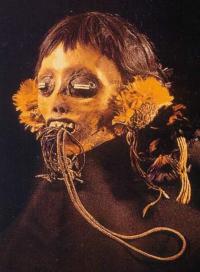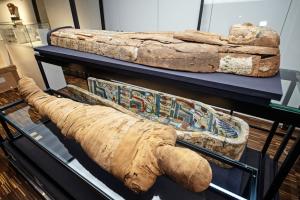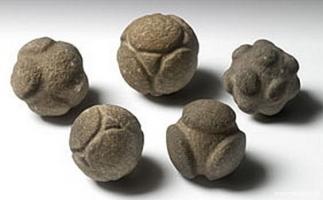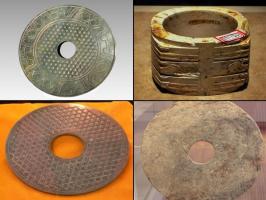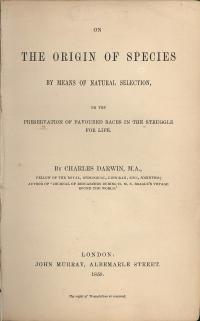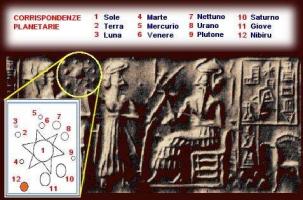The Origin and History of Embalming

Embalming is a set of techniques designed to preserve a corpse or animal body (taxidermy) from decomposition.
Many times there is confusion between the terms Mummification and Embalming. Let's start by specifying that the name "Mummy" for treated corpses was given by the Greeks who, finding bodies left naturally preserved in bitumen or asphalt, gave them this definition.
Embalming, on the other hand, is the term for an artificial process to which a body is subjected in order to preserve it intact.
From ancient times, some peoples sought to preserve the bodies of the deceased to prevent their deterioration. Techniques mainly made use of the removal of the viscera, in the dehydration of the body, in impregnating the corpse with resins and various substances.
In Western civilization, embalming was mainly used for soldiers and high-rank warriors who died far from home and whose bodies were intended to be preserved to celebrate their funeral in the homeland.
Embalming (from the Latin in balsamum) means to put in balsam, that is, in a mixture of plant resins; the so-called mummification process then, understood not in the natural sense, was very similar: bodies were treated with ointments, oils and resins, then wrapped in layers of fabric also impregnated with resins.
The word mummy (from Arabic mumiya, "bitumen") comes from an initial misinterpretation of the process. Poorly embalmed bodies dating from Egypt's Late Period often appeared black and brittle, and for that reason it was believed that they had been preserved by dipping them in bitumen.
In this text I will explain the various techniques developed over millennia by some civilizations.
The Egyptians
Egypt is perhaps the place where more than any other the concept of earthly life is linked to that imagery of eternal life in the Afterlife. With death the body became a corpse (in Egyptian Khat) that had to be preserved from putrefaction (in the famous "Book of the Dead" there are invocations to the god Osiris to preserve the body and give it immortality) so it had to be embalmed. The Ancient Egyptian civilization was the first to study the techniques with remarkable results.
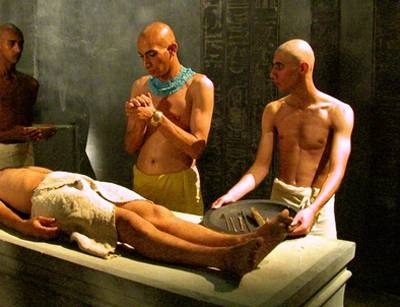
The Egyptians began the practices of embalming during the First Dynasty, refining them over the centuries. The feats of funeral homes spread in large numbers and were used by all social classes. The Egyptians believed that the preservation of the body could enable the spirit of the deceased to regain possession of it at a later time and thus, with the preservation of the deceased they would restore life, in the afterlife, to their loved ones. Man possessed not only the body but also the ka and the ba. The ka would be reunited with the body while the ba would find dwelling among the stars. The practice was also widespread among the Incas and other peoples of Peru in climatically favorable areas to counter decomposition effects. In fact, the earliest examples of corpses retaining non-bony parts came from burials in environments unsuitable for decomposition such as deserts or very cold areas.
The preparation of the deceased for embalming was carried out in the "embalming house," where the body would spend seventy days before being buried. The seventy-day period comes from the fact that the star Sirius took precisely this time to pass through the underground Duat. After these seventy days had elapsed there would be the rebirth of Sirius and, consequently, the rebirth of the body. Very clear are the words found on the Carlsberg papyrus dating from 1150 B.C. copied from a Seti cenotaph I. The papyrus proclaims
"Sirius usually spends seventy days in the Duat [...] [his] burial takes place like that of men [...] that is to say [he is] the image of the burial days that are for men today [...] seventy days he spends in the house of embalming [...] this is what is done (meant) by death."
Ancient historians have handed down to us the embalming methods practiced: there were three methods. The most expensive consisted of extracting the brain through the nostrils with a hook, and the remaining part was removed by introducing some substances. With a sharp stone, a cut was made along the abdomen, the intestines were pulled out (when treating the body of a Pharaoh the stomach, lungs, liver and intestines were put in the famous "Canopic" vessels, while the heart later was put back in its place) and it was cleansed. Afterwards they purged it with palm wine and a second time with powdered aromatics; they filled the belly with pure crushed myrrh, cassia and other substances except frankincense, and sewed it up. Then the body was soaked in nitro for seventy days. After the period had elapsed, it was removed from the nitro, and once washed the entire body was wrapped with strips cut from a byssus cloth, smeared with gum, which the Egyptians generally used instead of glue. Relatives were given the body and took care to have a wooden form made into a human figure, put the body in it, and after sealing it, it was kept in a burial chamber, placing it standing against the wall.
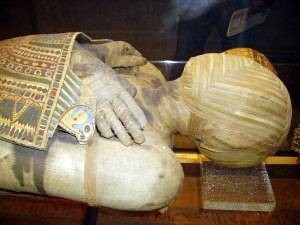
The second method was less expensive and was done by filling syringes with cedar oil and filling the belly of the corpse with it, without cutting it and not proceeding to the removal of the intestines, but by introducing through the anus the oil, preventing the flow from returning; then the body was placed in the nitro for the predetermined period, and finally the cedar oil was forced out of the belly, taking the macerated intestines and viscera with it. The flesh had been consumed by the nitro, so only the skin and bones remained of the corpse. Eventually the body was handed over to relatives without further processing.
The third system (the cheapest) was used to embalm the poor; they would clean out their bellies with a purge, be put under nitro for seventy days and finally delivered.
One curiosity concerned the wives of notables and beautiful and important women; they were not given immediately for embalming, but handed over after three or four days. This was done so that the embalmers would not rape them; in fact some embalmers had been caught raping a fresh corpse of a woman.
One of the substances used in Ancient Egypt for embalming was natron (sodium carbonate decahydrate) which was important for its hygroscopic properties, i.e., to water absorption and preservation. This substance was collected on the banks of the Nile in the pools of water that remained after floods and later evaporated under the action of the sun. It is hypothesized that what started the embalming techniques in Egypt was the observation that corpses abandoned in the hot desert sand dehydrated, becoming less susceptible to putrefaction.
The evolution of the technique also included evisceration, that is, the extraction of the internal organs, which were more difficult to preserve and were placed in special containers, called canopic jars.
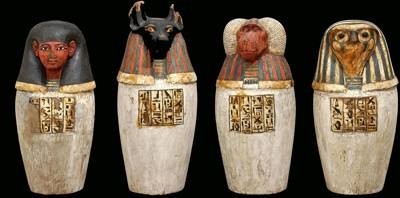
The Shiites
Shiites inhabited southern Russia and practiced embalming. When a king died they would wax his body, cut out the belly, clean it and fill the insides with various aromatic substances, and finally stitch it up. The corpse was then placed in a tomb covered with a large mound of rocky material. After a year had passed since the death they would take fifty servants, throttle them together with fifty horses, and after removing everyone's insides, they would be sewn up and buried together with the king.
Ancient Mesopotamia
In this region some peoples as early as the second millennium before Christ had reached the highest heights of civilization and used embalming techniques primarily for kings. The death of a ruler followed a protocol that involved exposing the corpse for three days, after which it was immersed in an aromatic bath, anointed with fine oil, and dressed in royal robes. Final act the deposition in a rectangular sarcophagus of stone closed by a huge lid. Unfortunately, the riches buried with the kings attracted desecrators, and so all the tombs were found empty.
North America
In the pre-Columbian period the preservation of corpses was practiced by northern peoples by simple drying (with smoke, fire or cold depending on the region), even with prior evisceration. Almost all of the mummies found are in a crouched position, wrapped in skins and cloths.
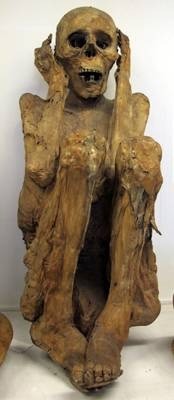
Among the various peoples who lived in North America, that of Virginia gave special treatment to its kings.
First they would cut the corpse's skin along the length of the back, and the dead person was thus entirely and perfectly skinned. The bones were then freed from the flesh, but without cutting the ligaments, so that the skeleton was put back into its skin, which in the meantime had been kept moist and elastic with oil and fat. The operation was completed by filling the spaces left empty by the flesh with very fine sand, and stitching up the skin. The corpse thus embalmed was taken to a special tomb where the other deceased monarchs were kept. Its flesh, exposed to the sun and well dried, was placed in a basket and laid at the feet of the embalmed corpse.
Central and South America
The oldest bodies in all of the Americas have been found in Chile at Pisagua Viejo, dating back to 5,000 B.C. Various studies have traced the embalming method used. The procedure consisted of removing the viscera, emptying the cranial cavity by drilling circular holes about two centimeters in diameter, filling the cavities with feathers, pieces of wood, leather, etc.; finally treating the external surface of the corpse with substances and objects to restore the characteristics it had in life. The Incas practiced embalming with their emperors or nobles. At death of the emperor, the whole kingdom was in mourning. All his concubines and servants followed him into the afterlife: after getting them drunk they were strangled. The emperor's corpse was embalmed, removing the intestines and replacing them with cloth soaked in balms and drugs. The drying work was aided by the aridity of the coastal desert and the sterile, porous sand. In Equador the Jivaro and in Brazil the Mundurucu practiced head embalming. The Mundururucu live in the Amazon and are perpetually at war with neighboring tribes. When a Mundurucu kills an enemy, he cuts off his head and takes it to his hut. In his hut the head is prepared in a unique way. Extracting the brain through the occipital hole, he washes carefully the skull, fills it with cotton and, after drying it, hangs it over a hearth to achieve perfect drying. He will take it with him on hunting trips.
Modern embalming
Nowadays, taxidermy is mainly intended for the preservation of dead animals (hunting trophies or ornamental animals, e.g., flamingos). In this context it is also called taxidermy (from the Greek: "tidying up" + "the skin"), as the purpose is mainly to preserve fur or plumage of the dead animal.
However, there is no shortage of applications for the preservation of human corpses even today. For example, in the secular Soviet Union Lenin's body was embalmed.
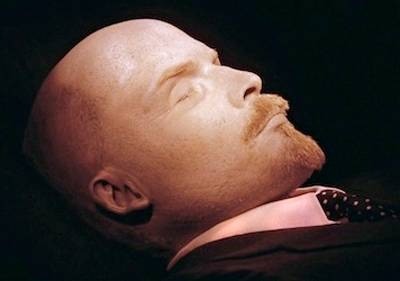
Modern embalming takes advantage of the discovery of formaldehyde, by chemist August Wilhelm von Hofmann (1867). This substance, later evolved into formalin, supplanted the then-used arsenic. After immersion in bactericidal liquids, certain substances derived from the original formaldehyde are injected into the corpse by special machines, which fill the entire vascular system and part of the lymphatic one. To prevent rigor mortis, the tendons of the limbs are severed. The eyelids are sewn shut so that the eye remains closed (in some techniques the eye is removed and replaced by metal globes). The mouth is also sewn shut for the lips, but only after all body openings are filled with medicated absorbent cotton. All closures are then sealed, nowadays with silicone derivatives, to prevent leakage. Embalming, human or animal, is prohibited by some legislations, including Western ones, as in the case of Holland.
Embalming Artists
Many were the people who in more or less recent times tried the art of embalming corpses; some with poor results, others with excellent end results.
Among the many, the Frenchman Fragonard deserves special attention. Born in 1732 in Grasse, he attended the school of the famous surgeon Renè Lambert to take a "brevet d'apprentissage"; a title he obtained in 1759. In 1763 he became director of the Veterinary School of Lyon. In this city Fragonard became a professor and demonstrator of anatomy, also devoting himself to the study of poisons and research into the most suitable chemicals for the mummification of corpses. In 1765 he opened a similar school in Paris and continued to perfect himself carefully in the anatomy of certain animals and man. With great enthusiasm he succeeded in a few years in embalming or preserving in particular liquids thousands of of animals. His fame grew and he created several enemies who succeeded in having his professorship removed. Fragonard continued his anatomy studies but in 1795 the authorities dismembered the d'Alfort collection, almost all of which would be lost. His creations amazed both in originality and perfection. An example is provided to us by the famous "Horse and Rider," where on the skeleton are highlighted muscles with tendons, veins, and arteries that are detached or fluttering. Unfortunately, very few perhaps a dozen of the various creations remain, and the secret of the techniques used remains a mystery. Fragonard died on April 5, 1799.
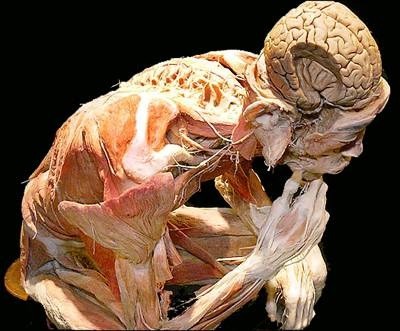
We could talk about many other people who were dedicated to the preservation of corpses, but the list would be long so we will only mention a few.
Paolo Gorini in 1873 was commissioned to embalm the body of Giuseppe Mazzini. Gorini traveled to Pisa on February 12, 1872, where Mazzini had died two days earlier. Our experienced embalmer had specialized in two embalming methods, one that preserved forever but required months of work and the other preserved the corpse for a short time with a preparation phase of only a few hours. It was decided on the longer method. Due to political problems with displaying the corpse so that deputies could pay their respects, Gorini had to wait until two o'clock on February 13. The corpse was brought into a room but putrefaction had begun and stinking gases were floating from every part of the body. Gorini somehow managed to embalm Mazzini's body (he applied some variations), but he himself declared that the result was not satisfactory.
The embalming continued in Genoa and lasted until October. The end result was certainly not good, but Gorini undoubtedly did his best.
We report the case of Dr. Giuseppe Paravicino who devoted himself to mummification techniques. Between 1901 and 1917 he was director of the Institute of Pathological Anatomy at Mombello asylum, near Milan.
Dr. Paravicino performed his experiments on the bodies of people who had died in the hospital. Today some of these preparations can be found in a room at the "Paolo Pini" psychiatric institutes near Milan. They consist of two whole female bodies, six heads, a head with a torso and other human parts. All the findings are perfectly preserved, but Dr. Paravicino took the secret of his technique to the grave. According to some scholars, by means of a special pump, Paravicino injected inside the corpses to be mummified a mixture of wax, kerosene and other special solvents. An evidence of this thesis is provided by the whole cadavers where there are two holes in the legs, one in the femoral artery and the other in the femoral vein; by injecting the solution through the artery, it spread throughout the body and then escaped into the femoral vein hole in the other leg. This seems to be the most accepted hypothesis.
Another great scholar of embalming techniques was Girolamo Sagato. Born in Vedana (BL) on June 13, 1792, to a poor family, from an early age he cultivated a great passion for the natural sciences, and as the years went by his interest focused on techniques for preserving bodies. He had the opportunity to work in Egypt, where his great passion bore fruit. Thanks to his spirit of observation and study of certain natural phenomena and special preparations, he was able to develop a technique that petrified the treated bodies. Many human anatomy scholars were amazed to see the petrified pieces of: muscles, liver, testicles, viscera, arteries, veins, etc.
In some cases through variations he could reduce the petrifying effect, giving the body a medium texture and make the joints flexible and the color of the skin change little, while hair, beard, hair remained firm. Among the many works performed is a small inlaid table, where Sagato arranged 214 pieces of treated human body. The pieces look like natural hard stones of the finest varieties, for example, jasper from Siberia obtained from the spleen, blood jasper from Spain obtained from the kidney of a fetus, coral from Cyprus made from a piece of heart and so for the tongue, liver, placenta, brain tumor and others from which he obtained other varieties of stones. His skill as usual provoked envy and he was unable to obtain permission and funds to apply his technique on a whole corpse. He died in misery taking his secret to his grave.
There were and are other scholars who seek to give eternity to bodies, but we want to conclude the section on Embalming here to avoid going on too long.
Taxidermy
Taxidermy is a compound word (from the Greek Tassein= order, and Derma= skin) for the technique of preparing animal skins for scientific and/or amateur purposes in such a way as to ensure their preservation over time, replacing almost the entire mass body of the specimen with armed and articulated dummies of various kinds (moss, tow, plaster, resins, etc.) and stuffing them so as to give them the appearance of live animals.
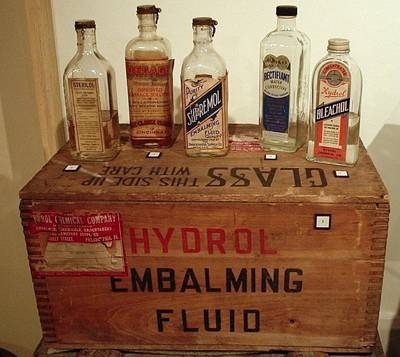
Taxidermy originated and developed with the great natural science museums.
It essentially involves skinning the animal, smearing its skin, internally, with preservatives (e.g., arsenical soap, no longer in use today because of its toxicity and replaced by boracic ointments) and 'mounting' the skin thus prepared on a stuffing or model, in kind of plastic materials held up by metal supports, imitating the shapes of the living animal.
Generally, the animals are skinned, trying to minimize lacerations and cuts; the skins, degreased and treated with appropriate tanning agents, are to be composed and mounted on dummies that closely mimic the live specimen.
Vertebrates such as fish, amphibians, reptiles, birds and mammals possess skins of different thickness, texture and layering, and different preparation techniques are applied to each class.

Sometimes the term taxidermy is also extended to the preparation of invertebrates, whose remains must be treated differently from those of Vertebrates. Often, invertebrates and some Vertebrates (Amphibians, Fishes) are best preserved in liquids (alcohol, formalin); some Arthropods and especially insects are best preserved dry, stuck on pins after being prepared in naturalistic poses, then kept in special entomological boxes.
Instead, the skeletons to be prepared get whitewashed, and the various bones are bound together in anatomical connection.
Different are the preparation and preservation of skins of specimens intended to form scientific collections for studies and research, from those dedicated to educational display in museum complexes and/or private collecting.
In the last two cases special attention is paid to taking care of every technical detail so as to make, not only in form but also in attitude and/or posture, the specimens "alive."
Formal propriety for educational preparations and for legitimate enhancement of specimens that have been hunted requires levels of skill on the part of the taxidermist that exceed the manual technicality by achieving true artistic achievements. Often, with specimens of rare species found in a poor state of preservation, wonders of technical and artistic value have been accomplished, thus ensuring the preservation of subjects of high scientific naturalistic value.









